Sep 23, 2014 | books, coins, commentary
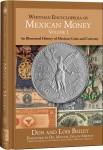 Most of the time I do not like repeating press releases or reporting on press releases. Press releases are written by or for the company issuing them. By design, they are written so that the announcement shows the company in a good light. I would rather use the product and report about it based on my own experience. But I am going to make an exception because of the long term implications.
Most of the time I do not like repeating press releases or reporting on press releases. Press releases are written by or for the company issuing them. By design, they are written so that the announcement shows the company in a good light. I would rather use the product and report about it based on my own experience. But I am going to make an exception because of the long term implications.
Whitman Publishing issued a press release to announce the release of the first volume of the Whitman Encyclopedia of Mexican Money, by Don and Lois Bailey. The first volume of a planned four-volume series starts the series with an overview and history of Mexican coinage and currency covers pre-Columbian money to the colonial era, the independence movement, revolutions, modern coinage reforms, commemorative programs, and silver, gold, and platinum bullion.
Numismatic Cataloging Systems
Krause-Mishler (KM#)
Created by: Chet Krause and Cliff Mishler Cataloging system of foreign coins, primarily used by the Krause Publications’ Standard Catalogs
PCGS
Created by: Professional Coin Grading Service PCGS maintains its own cataloging system for United States coins
Pick (P#)
Created by: Albert Pick Pick was a German notaphilist who developed a cataloging system for currency
VAM
Created by: Leroy Van Allen and George Mallis Developed by the authors in 1965 to catalog die varieties of Morgan and Peace dollars
Yeoman (Y#)
Created by: Richard S. Yeoman Original author of A Guidebook of United States Coins (The Red Book) developed a cataloging system primarily for Asian coins
Significant in the announcement is that this book introduces the cataloging of Mexican coinage with the Bailey-Whitman numbering system. The press release called this a comprehensive cataloging that is cross-referenced to “older systems.” Although I have not seen the actual book, page scans sent by Whitman as part of the press release shows that the older cataloging system being cross-referenced is the Krause-Mishler (KM) numbers used in Krause Publications’ Standard Catalog of World Coins.
Those of us who study and collect foreign coins have come to rely on KM numbers to help identify coins. The KM system has not only been unable to keep up with the proliferation of modern non-circulating legal tender coins (NCLT), especially from Canada, but is severely lacking when it comes to cataloging varieties.
Aside from omissions, the Standard Catalogs are riddled with errors that sometimes are never corrected. In the case of the Standard Catalog of World Paper Money, which is also known as the “Pick” catalog since it is organized by Albert Pick’s numbering scheme, it is so riddled with problems that Owen Linzmayer has produced his own catalog with better pictures and details called The Banknote Book. In fact, you can buy the book as a four-volume set or individual chapters representing different countries. I highly recommend Linzmayer’s books over all others. Go to banknotenews.com to learn more.
While I am not a collector of Mexican money, the sample pages provided by Whitman make the book look very compelling. It is difficult to review a book based on selected sample pages from the publisher, but it looks like something that could be used as a model for similar treatment of other countries. It would be nice to see similar books for Canadian, English, and Chinese coins.
If Whitman continues and provides comprehensive catalog information for other coins, it will be good for the industry. Between Whitman and Owen Linzmayer’s work, it should force Krause to fix their issues and provide better and more complete information to the collector. As we know, the more you know about your collection the better you enjoy collecting. This is why competition is good!
Click on any image to see the larger version.
All images courtesy of Whitman Publications.
Sep 12, 2014 | bullion, coins, gold, halves, US Mint, values
If you have not seen what has been going on in the gold market, the prices have been falling. The financial press has not provided a single reason as to why the gold market is going down but there is a consistent view that the United States economy showing strength with unemployment dropping and low inflation may be alleviating fears in the markets. Stocks are rising and it is suspected that investors are selling their gold shares in order to participate in the bull market.
For collectors it means that the U.S. Mint could adjust the prices of precious metal products. In particular, the price is coming down that could affect the price of the Kennedy gold half-dollar. Based on the table published in the Federal Register [PDF], if the London Fix price of gold falls below $1,250 per troy ounce, the price of the coin will drop to $1,202.50 or $37.50 below the $1,240 issue price.
The London Fix is now managed by The London Bullion Market Association. Gold prices are set by an auction that takes place twice daily by the London Gold Fixing Company at 10:30 AM and 3:00 PM London time. Auctions are conducted in U.S. dollars. The benchmark used by the U.S. Mint is the PM Fix price on Wednesday.
On September 10, 2014, the London PM Fix was $1,251.00 which will leave the price of the Kennedy gold half-dollar $1,240.
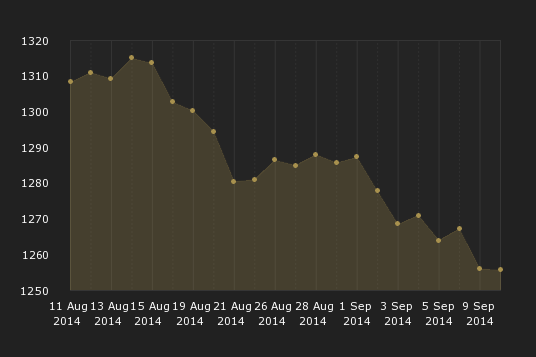
London PM Gold Fix for the month leading up to September 10, 2014
London PM Fix on September 10 was $1,251.00
Prices are in U.S. dollars
A strong economy is good for many reasons. In this case, when the price of gold drops the price of gold coins also drops. While this is not good for investors, it benefits collectors who will buy one or two coins for their collections. It also means that the value of the inventory that the dealers who spent a lot of money and effort in order to be first will be worth less than previously. After all, if the U.S. Mint is going to produce as many coins as the demand, then the public is better off saving money and buy from the U.S. Mint.
As anyone who has invested money will tell you that it is dangerous to try to time the market. I am sure that if you can figure out when the price of gold will be at its lowest while the U.S. Mint is still selling the Kennedy gold half-dollar, I know a bunch of people on Wall Street who want to talk with you. That being said, I have a feeling that the trends are in favor of waiting to see what happens. Although I have not decided whether I will buy a coin, I am going to wait to see what the market does. If the price of gold continues to fall, I could be convinced to buy one of these coins for myself.
Pricing for the 2014 50th Anniversary Kennedy Half-Dollar Gold Proof Coin
As published in the Federal Register (
79 FR 38127)
on July 3, 2014
| London PM Fix |
Item |
Sale Price |
| $1000.00 to $1049.99 |
¾ Troy oz |
$1,052.50 |
| $1050.00 to $1099.99 |
¾ Troy oz |
$1,090.00 |
| $1100.00 to $1149.99 |
¾ Troy oz |
$1,127.50 |
| $1150.00 to $1199.99 |
¾ Troy oz |
$1,165.00 |
| $1200.00 to $1249.99 |
¾ Troy oz |
$1,202.50 |
| $1250.00 to $1299.99 |
¾ Troy oz |
$1,240.00 |
| $1300.00 to $1349.99 |
¾ Troy oz |
$1,277.50 |
| $1350.00 to $1399.99 |
¾ Troy oz |
$1,315.00 |
| $1400.00 to $1449.99 |
¾ Troy oz |
$1,352.50 |
| $1450.00 to $1499.99 |
¾ Troy oz |
$1,390.00 |
| $1500.00 to $1549.99 |
¾ Troy oz |
$1,427.50 |
| $1550.00 to $1599.99 |
¾ Troy oz |
$1,465.00 |
| $1600.00 to $1649.99 |
¾ Troy oz |
$1,502.50 |
| $1650.00 to $1699.99 |
¾ Troy oz |
$1,540.00 |
Fixing chart courtesy of London Gold Fixing Company.
Sep 11, 2014 | history, medals, news, US Mint
Congressional Gold Medal Awarded to the Fallen Heroes of September 11, 2001
WASHINGTON – Three Congressional Gold Medals were awarded today in honor of the men and women who perished as a result of the terrorist attacks on the United States on September 11, 2001. The ceremony took place in Emancipation Hall in the U.S. Capitol Visitor Center.
The United States Mint prepared and struck the three gold medals—one each for the World Trade Center, the Pentagon, and Flight 93 in rural Pennsylvania—in accordance with the authorizing legislation, Public Law 112-76, the Fallen Heroes of 9/11 Act. Each medal bears a unique design.
The New York Medal
The medal’s obverse (heads side) features an abstract representation of two towers. The abstract lines flowing downward symbolize loss while the lines moving upward represent rising above, hope, and deliverance from that loss. This configuration also suggests the World Trade Center’s Twin Towers. The numbers 93, 77, 175, and 11 represent the four planes involved in the tragic events of 9/11 and are positioned as if on a clock, representing the times of the crashes. The words “Always Remember” are set upon a stone wall similar to the wall that bears the names of the victims at the memorial.
The reverse (tails side) features a single rose protruding from an edge at the top, an echo of the memorial in New York where a white rose is placed through the name of each victim on his or her birthday. The inscription reads: WE HONOR THE THOUSANDS OF INNOCENT PEOPLE FROM MORE THAN 90 COUNTRIES LOST AT THE WORLD TRADE CENTER IN THE ATTACKS THAT SHOOK THE WORLD ON SEPTEMBER 11, 2001. MAY THEIR MEMORY INSPIRE AN END TO INTOLERANCE. The design also includes a bald eagle standing sentinel and clasping branches of laurel signifying an eternal honoring of those who perished in the tragedies.
The obverse of the World Trade Center Fallen Heroes’ medal was designed by Artistic Infusion Program artist Joel Iskowitz and executed by United States Mint Sculptor-Engraver Jim Licaretz. The reverse was designed and executed by United States Mint Sculptor-Engraver Phebe Hemphill.

Obverse of the New York Fallen Heroes Medal designed by Joel Iskowitz and engraved by Jim Licaretz

Reverse of the New York Fallen Heroes Medal designed and engraved by Phebe Hemphill
The Pentagon Medal
The medal’s obverse depicts the rebuilt façade of the Pentagon where Flight 77 crashed. The angle of view is the angle of the flight path. A single candle and a small bouquet of flowers and greens signify a sacred memorial at the site. The American flag flies overhead in a united and patriotic embrace.
The reverse features 184 stars on a raised border around the edge of the design, one star for each of the victims of the tragedy. The inscription reads: WE HONOR THOSE ON FLIGHT 77 AND THOSE IN THE PENTAGON WHO PERISHED ON SEPTEMBER 11, 2001. WE WILL NEVER FORGET THEIR SACRIFICE AS WE UNITE IN MEMORY. The design also features a bald eagle standing sentinel and clasping branches of laurel signifying an eternal honoring of those who perished in the tragedies.
The obverse and reverse of the Pentagon medal were designed and executed by Ms. Hemphill.
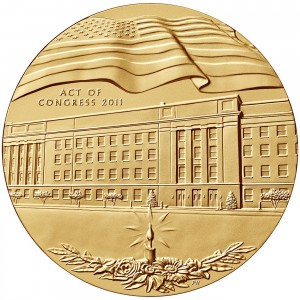
Obverse of the Pentagon Fallen Heroes medal designed and engraved by Phebe Hemphill
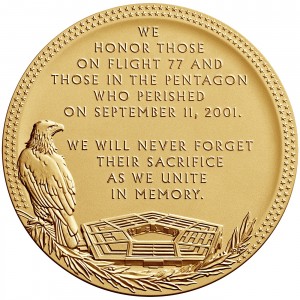
Reverse of the Pentagon Fallen Heroes medal designed and engraved by Phebe Hemphill
The Flight 93 Medal
The medal’s obverse features the hemlock groves behind the boulder at the Flight 93 Memorial, a simple reminder of loss and healing.
The reverse features 40 stars on a raised border around the edge of the design, one star for each victim. The inscription is WE HONOR THE PASSENGERS AND CREW OF FLIGHT 93 WHO PERISHED ON A PENNSYLVANIA FIELD ON SEPTEMBER 11, 2001. THEIR COURAGEOUS ACTION WILL BE REMEMBERED FOREVER. The design also features a bald eagle standing sentinel and clasping branches of laurel signifying an eternal honoring of those who perished in the tragedies.
The obverse of the Flight 93 medal was designed and executed by United States Mint Sculptor- Engraver Joseph Menna, and the reverse was designed and executed by Ms. Hemphill.
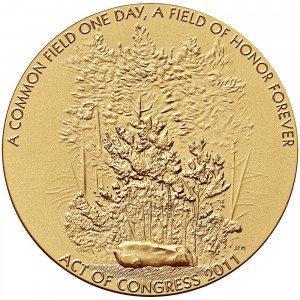
Obverse of the Flight 93 Fallen Heroes medal designed and engraved by Joseph Menna
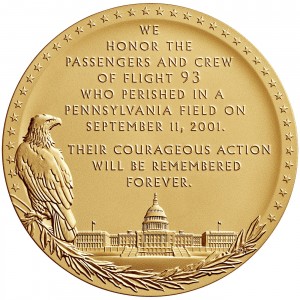
Reverse of the Flight 93 Fallen Heroes medal designed and engraved by Phebe Hemphill
Public Law 112-76, which requires the United States Mint to strike the Fallen Heroes of 9/11 Congressional Gold Medal, also authorizes the bureau to strike and sell bronze reproductions of the medals. The medals will be available for purchase beginning noon Eastern Daylight Time (EDT) Sept. 11, 2014, via the bureau’s online catalog at http://www.usmint.gov/catalog and at 1-800-USA- MINT (872-6468). Hearing and speech-impaired customers with TTY equipment may call 1-888-321-MINT (6468). The three-inch medals—product codes FH1 (New York Medal), FH3 (Flight 93 Medal), FH5 (Pentagon Medal)—will be priced at $39.95.
Images and text courtesy of the U.S. Mint.
Sep 10, 2014 | US Mint, video, web
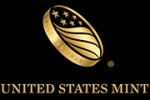 After a few years of playing with the look-and-feel of their website, the U.S. Mint is in the process of redesigning and reprogramming their online catalog.
After a few years of playing with the look-and-feel of their website, the U.S. Mint is in the process of redesigning and reprogramming their online catalog.
Face it, the U.S. Mint has not been the paragon of customer service. Their website and fulfillment process has been severely lacking. There were times when the site would crash after releasing high demand products including the limited edition American Eagle anniversary coins. Other than the re-skinning of the site, the U.S. Mint web presence has been a disaster.
Beginning in fiscal year 2014 (October 2013), the U.S. Mint awarded a contract to PFSweb to streamline fulfillment and re-design the web-based catalog and ordering service. The new website is due to be released at the beginning of fiscal year 2015 (October 2014). However, the impact of PFSweb has been felt with the better processing of online and telephone orders.
On September 9, the U.S. Mint released a video giving a preview of the new website. It maintains the color scheme the U.S. Mint has been using while adding flatter elements that have become the in-style of today’s website. According to the video, there will be a virtual tour coming soon. I will keep an eye out for that announcement.
In the mean time, here is the U.S. Mint video:
Sep 8, 2014 | cents, legal, US Mint

Experimental 1974-D Lincoln cent made struck on an aluminum planchet
The argument is over a 1974-D Lincoln cent made of aluminum that was to be auctions by Heritage Auctions during the April 2014 Central States Numismatic Society auction. Rather than being auctioned, the U.S. Mint requested its return as government property even though it was reported that no records of the coin’s production exist.
According to an updated report appearing in Coin World, the coin was given to Harry Lawrence, a former Denver mint assistant superintendent, as part of a retirement gift in 1979. Upon his death, his possession were willed to his son Randall Lawrence.
Randall Lawrence and Michael McConnell, a San Deigo-area dealer working with Lawrence, consigned the coin to Heritage in hopes to be able to donate at least $100,000 from the sale to charities helping the homeless in San Deigo. Heritage had estimated the coin to be worth $250,000. Lawrence and McConnell are asking the federal court to determine the coin’s ownership.
U.S. Mint does not have records of the aluminum cent being struck in Denver. There are records of 1 million coins struck in Philadelphia. Nearly all were destroy.
The U.S. Mint’s mishandling of their own records are legendary. Some of the more famous coins that have escaped official record include the 1933 Saint-Gaudens double eagle and the five 1913 Liberty Head nickels. Numismatic researcher Roger Burdette has documented significant gaps in the way the U.S. Mint has historically mishandled their own documents. Even in recent years, the U.S. Mint has played fast-and-loose even with required documentation during previous director’s term because the narrative of the annual report would make the U.S. Mint’s performance look less than stellar.
Unfortunately for the U.S. Mint, Coin World reporter Paul Gilkes was able to interview former Denver Mint employee Benito Martinez “who said he personally struck fewer than a dozen of these coins as a die setter on aluminum planchets provided by the Philadelphia Mint.” Martinez said that these coins eventually made its way to the U.S. Mint headquarters in Washington, D.C.
Aside from the bad precedent this would create for all pattern coins and trial strikes, this has the potential to undo whatever good will the U.S. Mint has built with the collecting public in the last few years. Problems with the Kennedy gold coin not withstanding, the work that the U.S. Mint has done after the departure of Director Edmund Moy to build a more collector-friendly can be undone by continuing this fight.
Maybe it is time that the lawyers at the U.S. Mint and the Department of the Treasury stop trying to flex its muscles and realize the goodwill that would be created by changing policies and attitudes. After all, like all lawyers it is possible to interpret the law in a manner that would be more helpful while protecting the U.S. Mint and the U.S. government.
Image courtesy of Coin World.
Sep 6, 2014 | coins
 The American Numismatic Association issued a statement on August 28 about the 2014 World’s Fair of Money. As part of the statement, the fiasco of the Kennedy half-dollar gold coin was addressed.
The American Numismatic Association issued a statement on August 28 about the 2014 World’s Fair of Money. As part of the statement, the fiasco of the Kennedy half-dollar gold coin was addressed.
Before I add my commentary, I do not blame the ANA or the U.S. Mint for the problems at the Kennedy Half-Dollar gold tribute sales. The ANA, U.S. Mint and those responsible for security at the show site did what they could in order to make this a smooth process. As I have said in the past, I blame the dealers who were responsible for hiring the people who caused the problems.
Let’s look at the statement:
“When the U.S. Mint announced the sale of its dual-dated gold Kennedy commemorative coin at the World’s Fair of Money, the ANA was hopeful that the release of such a popular coin would be a boost to the hobby and increase public interest in numismatics,” said ANA Executive Director Kim Kiick. “Unfortunately, the challenges created by the mass of people trying to buy the coin became a concern for public safety, both at our show and at the U.S. Mint’s retail sites in Philadelphia, Denver and Washington, D.C.”
As I investigated further, there appears to have been less of a problem at the Washington, D.C. headquarters because the dealers involved hired actors to stand in line for them. Although the actors were not told what the “audition” was about, witnesses say that the actors were better behaved than the other line standers.
The image of the situation in Denver is haunting in regard to security. People lining up for a three-quarter ounce of gold that was selling for $1,240 and even more on the secondary market would make anyone nervous.
Public safety was the ANA’s top concern after the U.S. Mint announced that it would debut the coin at the World’s Fair of Money. Kiick commended the efforts of PPI Security, the staff of the Donald E. Stephens Convention Center, the Rosemont Police Department and ANA staff and volunteers for maintaining order. She also expressed disappointment that many of the coins were bought by people paid to stand in line.
Given the millions, if not billions of dollars in coins, currency, and other merchandise in the convention center, it is amazing that nothing else happened. Reports suggested that the crowd standing in line at the Stephens Convention Center were not collectors and their behavior was not what would be expected at an ANA show.
“The intent of the U.S. Mint was to sell its allotment of 2,500 coins to 2,500 different people, putting these coins into as many different hands as possible,” Kiick said. “The hiring of proxies to stand in line and receive the coin for somebody else not only went against the spirit of the sale, it hurt the ANA. The ANA is responsible for paying for extra security and damages to the exterior of the convention center brought on by these crowds.”
In an article by Dave Harper of Numismatic News, this is not the first time that this type of situation has occurred. Harper recalls the story by California dealer Ron Gillio who purchased 1968 proof sets in Denver using college students.
I had two thoughts after reading this. First, the dealers did not use college students in 2014 and placed them in an enclosed space at the World’s Fair of Money creating a situation where extra security was required. Second, to borrow a quote from my late mother, “two wrongs don’t make a right.” It was not the right thing to do at that time and it was not the right thing to do today.
While the U.S. Mint has announced that it plans to continue offering new coin releases at the World’s Fair of Money, Kiick said any future sales are contingent on whether the Mint and the ANA can put together a security and sales plan that will address the concerns raised from the Kennedy sales.
“We love having the U.S. Mint at all of our shows, and we certainly enjoy seeing the Mint bring exciting new products to the marketplace that will increase public interest in the hobby,” Kiick said. “However, the problems we experienced this year far outweigh the benefits. There will be no onsite sales in the future unless we can come up a new sales process to avoid the problems encountered at the various U.S. Mint sales locations.”
One way to control the sales at the ANA shows is to limit the sales to ANA members. ANA members have membership numbers and their membership information stored in an ANA database. If you are a member and want to purchase a newly released U.S. Mint product, you register with the ANA and receive a ticket. The ticket would be printed with your membership number and would identify you should something happen. The ticket would be non-transferrable.
Once the ticket is issued, it will be the responsibility of the member whose number is on the ticket to act in accordance with the ANA Code of Ethics. If the member transfers the ticket, the member remains responsible for the behavior of the person holding the ticket. If the ticket holder disrupts the proceedings, the member whom the ticket was issued to is responsible. That member would then be subject to appropriate disciplinary actions including legal action, if necessary.
Before anyone argues what is “right&rdqui; or “fairness,” the ANA can and should do what is in the best interest of the ANA. It is the ANA’s show and the ANA can run the show way it sees fit. If the ANA wants to limit access to members, as a membership-only organization, they can limit access to the bourse floor, even to the U.S. Mint.
If you do not like it, look at the video of what happened in Denver and blame the dealers who created this issue.
Sep 5, 2014 | ANA, coins, news, US Mint
 When the calendar flips to August, my wife begins to complain about the humidity and wanting to go “home” to Maine where she grew up. For me, the kid from south Brooklyn, August begins the last push to the end of the federal government’s fiscal year. With congress out of town, many agencies stop worrying about policy shifts and prepare for the new fiscal year. August is the calm before the policy storms.
When the calendar flips to August, my wife begins to complain about the humidity and wanting to go “home” to Maine where she grew up. For me, the kid from south Brooklyn, August begins the last push to the end of the federal government’s fiscal year. With congress out of town, many agencies stop worrying about policy shifts and prepare for the new fiscal year. August is the calm before the policy storms.
This year has been unusual in that the weather has been more moderate than usual and world events have changed the tenor for those of us who work for the federal government. These events are not limited to areas of conflict. Those of us working in computer security have noticed an uptick in online criminal activity beyond what you read in the headlines.
With nothing happening on Capitol Hill, let’s look at the news generated by the U.S. Mint.
Following the issues during the sales at all locations for the Kennedy Half-Dollar gold tribute coin, the U.S. Mint suspended sales early and will re-evaluate their process for over-the-counter sales of coins. Sources at the U.S. Mint were surprised with the reaction since there are no mintage limits on the coin.
Subsequently, American Numismatic Association Executive Director Kim Kiick announced that sales of newly released coins by the U.S. Mint would be suspended indefinitely because of security concerns.
As an interesting side note, the price of gold has dropped and is close to the price that would lower the purchase price if ordered from the U.S. Mint.
Later in the month, the U.S. Mint announced that the Philadelphia facility broke a single day production record by producing 42.44 million coins for circulation. They beat their previous record of 32.28 million coins set in October 2013. The U.S. Mint produced a total of 1.33 billion coins for circulation in July with more than half of those being produced in Philadelphia.
The branch mint in Philadelphia is the world’s largest coin factory. No other mint in the world can produce the number of coins that can be struck at Philadelphia. The second largest coin factory is the branch mint in Denver.
Record production is more than an accomplishment for the U.S. Mint. They are being struck to fulfill orders for circulating coins from the Federal Reserve. This means that the Fed needs the coins to place into circulation which is a good sign for the economy. If the economy was slower, as it was a few years ago, the demand for coins would have slowed to where the U.S. Mint would have to reduce production.
The U.S. Mint has hired Naxion Research of Philadelphia to poll customers “to share [their] insights on new U.S. Mint products for 2015.” Customers were chosen at random to participate. Those who ordered products from the U.S. Mint via their website were sent an email invitation to take the survey. A separate group who ordered products by the telephone or by mail order was sent a paper survey form.
Survey results are due by September 15, 2014 regardless of the format used.
Aug 26, 2014 | coin design, coins, commemorative, foreign, web
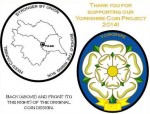
Proposed design of the Yorkshire (UK) Challenge Coin.
Think about how you would feel to help a community create a challenge coin for itself. In the process of helping the community, you can collect one of these challenge coins for yourself. If you provide enough assistance, then you can own one of the lowest numbered challenge coin.
Buried in my inbox was a note about a KickStarter project to create a challenge coin for Yorkshire, U.K. For as little as £6, (currently $9.94) you can own a coin numbered between 100 and 999. If you can afford £20 ($33.14), you can own a coin numbered between 10 and 20. Sorry, but the lower numbers have been purchased. All you have to do is go to KickStarter and fund the project.
For those not familiar with KickStarter, it is a website used to allow interested people to fund projects of their choosing. Kickstarter projects are mostly creative endeavors or involve some creativity in art, music, and technology where you receive awards for your level of funding. The financing model is called “crowd sourcing” and has been used effectively to launch films for the Sundance Film Festival, a skate park in Philadelphia, a photo exhibit on the site of the Berlin Wall, and the Fitbit smart watch.
KickStarter uses and all or nothing model meaning that if the project only receives the money if it is fully funded. If it does not, your credit card will not be charged and you will not receive your premium, of course. For the Yorkshire challenge coin, they are asking for £3,000 ($4,970.52). Currently, there is £220 pledged ($364.50) with 3 days to go. The funding drive ends on Saturday, August 30 at 1:36 AM EDT.
What the heck… it seems like a very cool idea. Let’s see if we can help put the project over the top and get it funded. Even if you do not want the coin, you can spare £3 (about $5) to help!
Note that there are extra postage requirements for shipping outside of the United Kingdom.
Aug 13, 2014 | ANA, coins, commemorative, commentary, ethics, gold, shows, US Mint
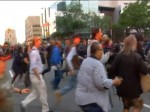
From the raw video of people dashing across the street at the Denver Mint
The media reported that those waiting for to purchase the coins were not collectors. Most were being paid by dealers to be on the line in order to get around the U.S. Mint purchasing limits. As part of their attempt to game the system, these dealers put collectors and the general public in danger by handing large amount of cash to needy people who did not conduct themselves in a manner that is consistent with the ANA Code of Ethics. Since those behaving badly were being paid by the dealers, they are representatives of the dealers, making the dealers responsible for the action of those they employ.
In case those dealers have forgotten, according to the ANA Code of Ethics:
As a member of the American Numismatic Association, I agree to comply with the following standards of conduct:
- To conduct myself so as to bring no reproach or discredit to the Association, or impair the prestige of the membership therein.
This applies directly to the dealers whose action caused problems at the World’s Fair of Money. Since sales of the coin were made at the U.S. Mint’s booth on the bourse floor, this is a case where the dealers who participated in this discredited the Association by creating an environment that potentially jeopardized the security of the show. By putting the security in jeopardy and bringing this negative publicity to the World’s Fair of Money, the participating dealers impaired the prestige of the membership especially when they had to put the U.S. Mint and the ANA Executive Director in the position to have to act as a parent to dealers acting like impetuous children.
- To base all of my dealings on the highest plane of justice, fairness and morality, and to refrain from making false statements as to the condition of a coin or as to any other matter.
Although the launch of the 2014 National Baseball Hall of Fame commemorative coin during the Whitman Baltimore Expo was a success, there was a feeling that the sales format did not give collectors a chance to purchase the coin. In order to promote the broader sales of the coin, the U.S. Mint adjusted its sales requirement to limit over-the-counter sales in order to give more collectors the opportunity to purchase the new Kennedy gold coin. How could the U.S. Mint or the ANA know that the sales of a coin that does not have any mintage limits would cause problems when the sales of a commemorative coin with mintage limits went without significant issue?
Unfortunately, the intent of the U.S. Mint was impeded by some dealer’s plane of justice by their action. By immorally trying to get around the U.S. Mint’s sales limits by using questionable methods to unfairly stack the line against the collector, the dealers were making false statements to a government entity, and thus the public it represents, as to their eligibility to purchase the coin.
The appalling images provided by Denver television news (see below) of the behavior of those described as homeless on behalf of the dealers trying to get around the sales limits not only is not only unjust to legitimate purchasers and immoral, but as ANA members discredits themselves as ANA members.
Therefore, I am accusing ALL of the ANA members who hired these people that acted on their behalf of the ANA dealers with violation of the ANA Code of Ethics. The ANA Board of Governors must take action to restore the organization’s credibility by suspending those involved as per the ANA Bylaws!
Images of the shameful display caused by ethically challenged and greedy dealers courtesy of
ABC 7News Denver.
Aug 9, 2014 | ANA, technology

I was not able to make it to Rosemont for the
World’s Fair of Money but wanted to deliver a statement about the security of the new
money.org website and service. The following was the statement I sent.
I apologize for not being with you in Rosemont to deliver this personally, but I wanted to send this quick report about the security of the new website and the systems that support the website.
Since joining the Technology Committee, my goal has been to ensure that the underlying architecture, the computers and network that connects them, is robust enough to support anything the ANA would want to do and to make sure that it is secure so that the ANA does not add itself to the list of recent attacks.
From the beginning of this project, many decisions were made that has lead to the system being designed in a way that could support anything the software can accomplish. A company with an excellent industry reputation hosts the physical computers. Also, the architecture of the computers, the way they are setup and connected to each other, is done in a way to allow for growth while being able to maintain security.
As someone who has been working in computer security for more than 25 years, it was important for me to make sure that not only my information was kept safe, but that of all ANA members were also protected. I am happy to report that the systems and software supporting the ANA website are properly hardened to resist attack.
I understand that there will be the ongoing question “is the site secure.” The problem is that there are threats out there that we do not know about, threats that have yet to be discovered or created, accidental mistakes, and errors that can cause problems. I can report that this system is designed to protect against known attacks, it is also design to catch many errors and repel as many potential attacks as possible.
In computer security, we work on identifying the risks and what it will take the mitigate them based on how confidential the data is, the integrity that has to be maintained, and how it is to be made available. One area of concern was the personally identifiable information, or PII, of member data including their login information and the credit cards they use with the ANA.
You might have read the news were it was reported that overseas hackers stole over one billion passwords throughout the Internet. I can report that the method they used to steal all those passwords will NOT work on the ANA’s website. Those same protections will help keep the PII of ANA members safe.
Another area of concern what the safety of member credit card information. To protect the confidentiality of the ANA member’s credit card information it is important to note that anytime the credit card information is communicated from one computer to another, it is encrypted using state-of-the-art encryption. After providing the ANA with the credit card and is processed, the services the ANA use to manage member information will not keep the credit card information. The credit card information is deleted and all that the ANA keeps is a transaction number that can be used to verify the payment with the credit card processor.
My family and friends know that when it comes to computer security, I am very paranoid. Many resisted doing certain online tasks like e-filing their taxes until I was satisfied with the security of the site. If a member was to ask me if I would use and trust the website as designed today, I would give it a hardy endorsement and say that I would register even if I was not a member of the Technology Committee. I am convinced everything was done to maintain the integrity of the membership information while keeping it confidential.
Finally, I would like to congratulate everyone on a job well done. Specifically, I would like to thank Jake Sherlock for delivering this message for me and congratulate him on a job well done. I also would like to send my highest commendation to Ann Rahn, the ANA’s project manager, who not only did a fantastic job herding the cats but also put up with the special quirks of the members of the Technology Committee. The next time I see them, I owe them a beverage of their choosing!
Thank you for allowing me to be part of this process.
 Most of the time I do not like repeating press releases or reporting on press releases. Press releases are written by or for the company issuing them. By design, they are written so that the announcement shows the company in a good light. I would rather use the product and report about it based on my own experience. But I am going to make an exception because of the long term implications.
Most of the time I do not like repeating press releases or reporting on press releases. Press releases are written by or for the company issuing them. By design, they are written so that the announcement shows the company in a good light. I would rather use the product and report about it based on my own experience. But I am going to make an exception because of the long term implications.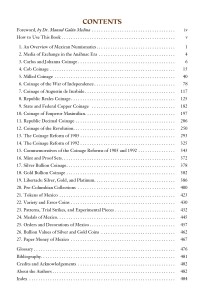
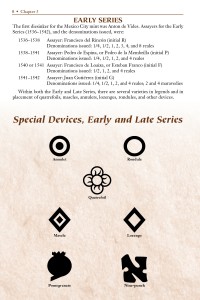
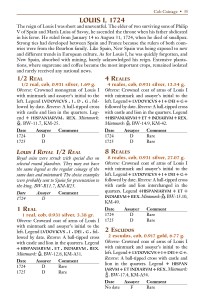









 After a few years of playing with the look-and-feel of their website, the
After a few years of playing with the look-and-feel of their website, the 
 The
The 


